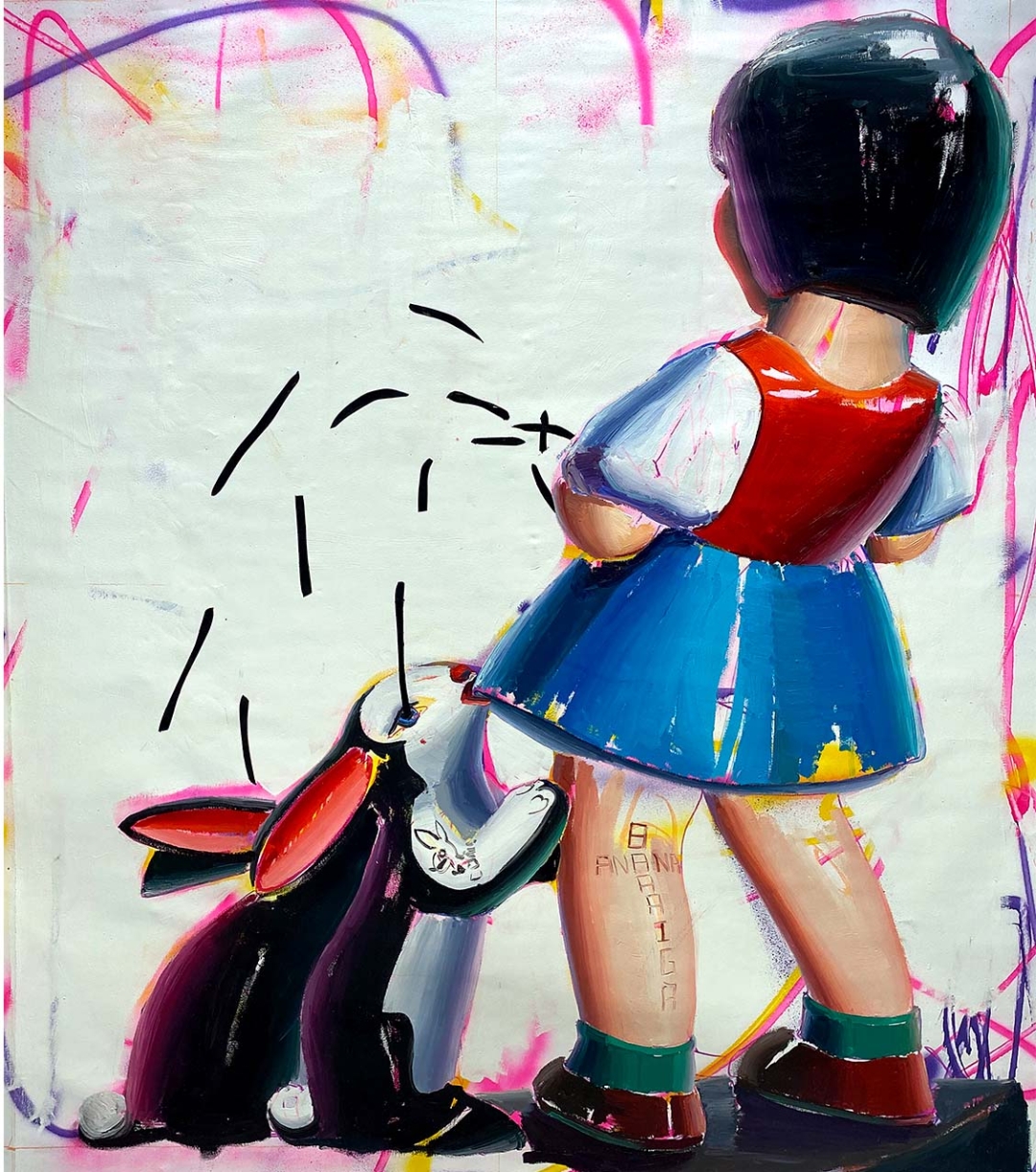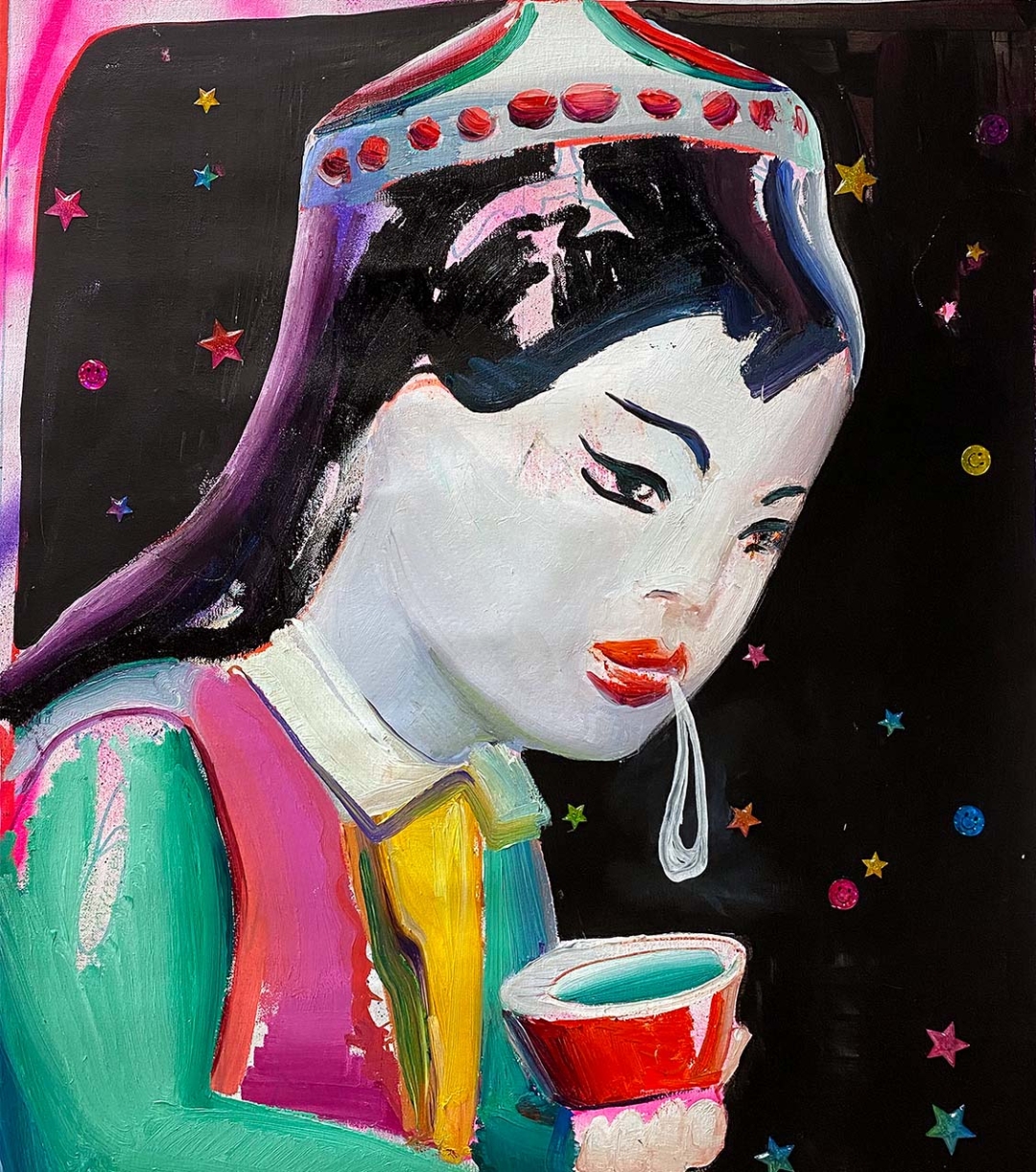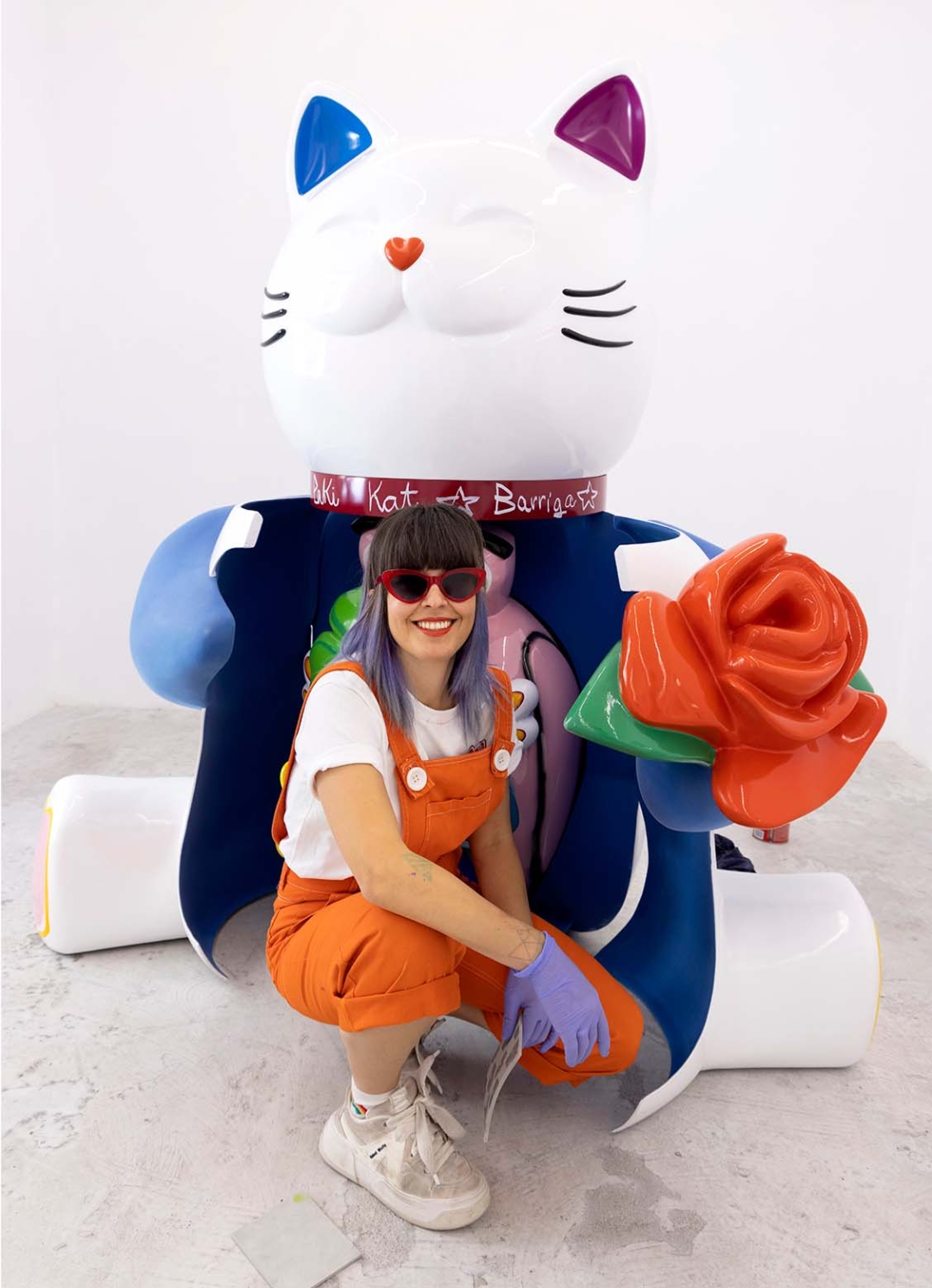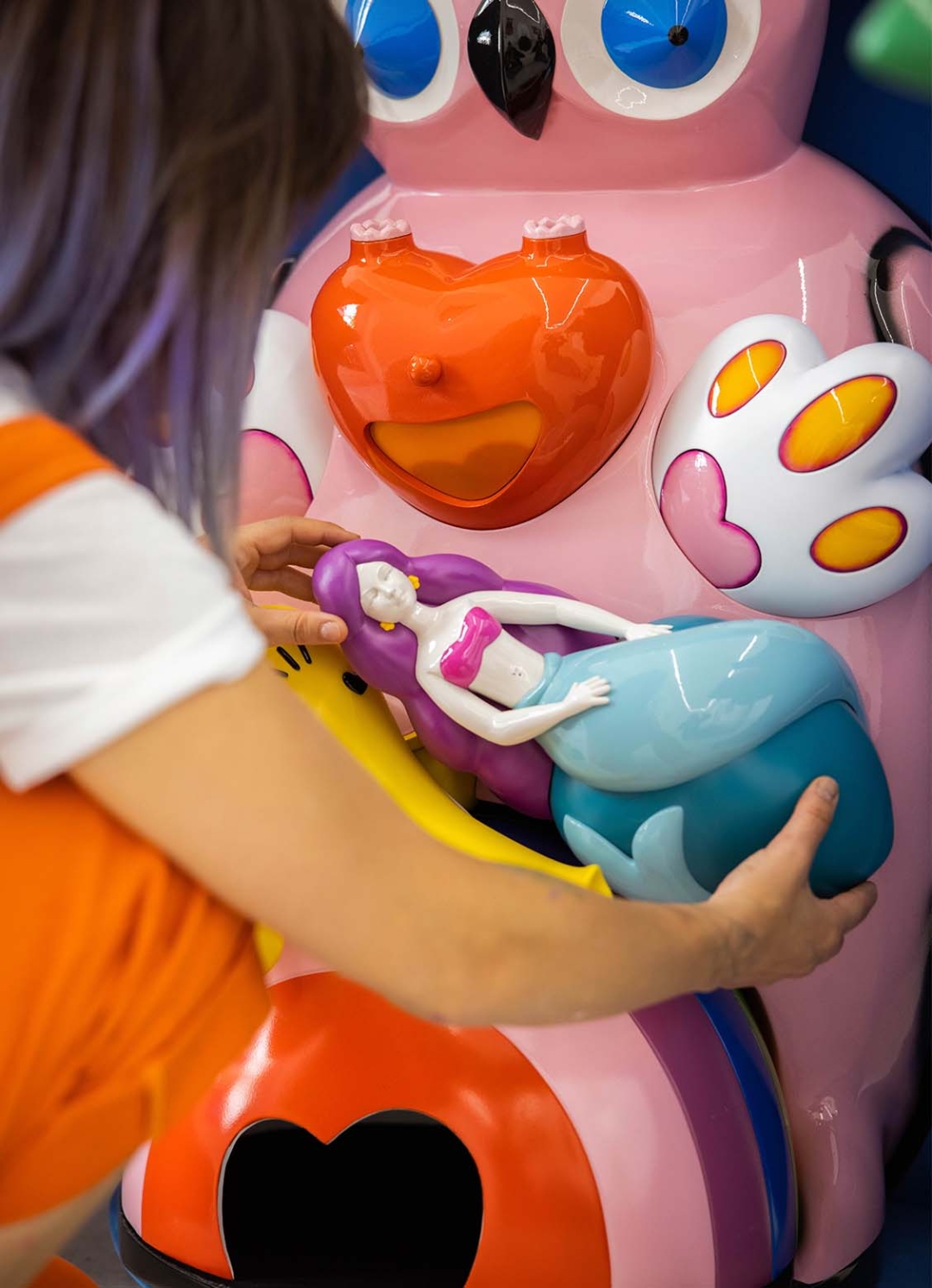Ana Barriga
#blessedmiraclepainting
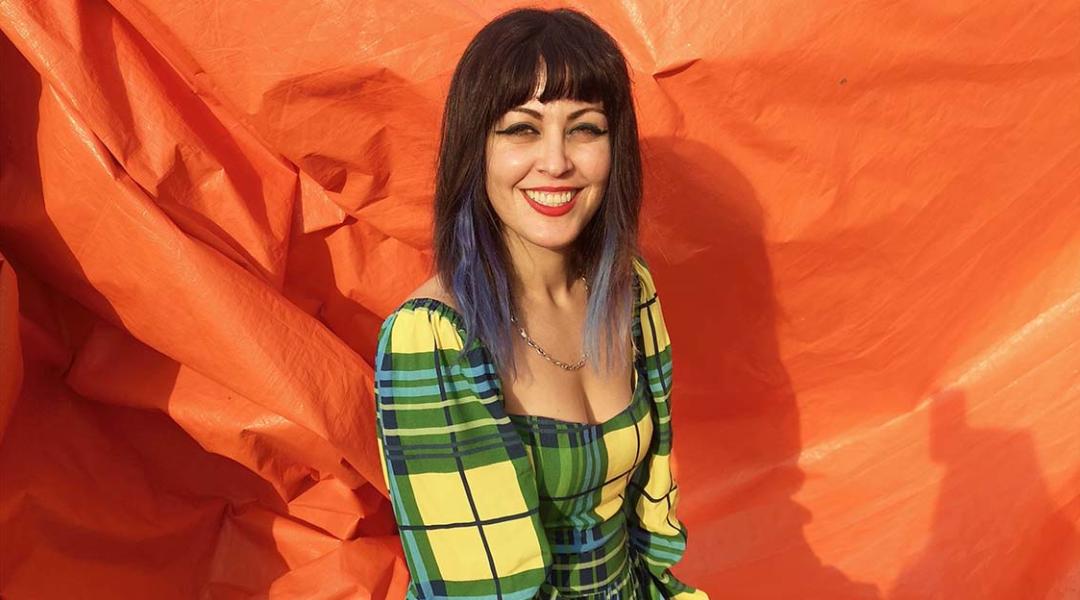
While she talks, Ana Barriga assures us that she can’t stop destroying the dictionary and, it’s true that she’s breaking language, but not the one she thinks, rather artistic language. Mexico, the United Kingdom, the United States, and South Korea are just some of the countries impacted by her might. It seems that heavily accented pop art needs no translation.
Chatting to Ana Barriga (Jerez de la Frontera, 1984) is like drinking a glass of wine from her hometown: you perk up instantly. A similar intoxicating effect is created by her works, the names she gives them, or the hashtags of her Instagram posts. Some examples: Putti Barriga is the name of her latest sculpture; Mande!, La pareja perfecta or Plan B are titles of random paintings of hers; and #anaparriba, #portidejolastragaperras, or #reinatú the hashtags that have turned into her distinguishing traits. Full-colour Andalucian sarcasm.
All your hashtags could be framed, but there’s one you use again and again: #pinturabenditomilagro [#blessedmiraclepainting]. Is that how you feel about it?
Absolutely. Due to the environment I’m surrounded by and where I grew up, there were more chances of me working as a prostitute or selling drugs than as an artist. Not because of my parents —they did a great job—, in fact, we had a really creative environment despite it being absolute nothingness. The thing is that working in something cultural there was a miracle.
When did you realise that painting was your talent?
I studied many things before starting to paint and, when I was fed up with doing modules and going to art schools, I decided to go to university. But in my family that was less feasible than travelling to Mars. In fact, I started late, at the age of 24 or 25. Nevertheless, when I put my first colour, my first mixture in the palette, it was like falling into a marvellous black hole. I’d never experienced or seen that power in my life.
“I’ve ruined a lot of paintings before finding that sweet spot with the materials as I understand them now: with respect, but also with irreverence”
Now you exhibit and sell your work around the world. What would your past self say?
I grew up in Cuartillos, a district of Jerez of around one thousand residents, so I’d be amazed. When I was in New York and video called my parents, while I showed them its imposing buildings, I said to them: “This is nothing for that girl from Cuartillos.”
Oil paint, glaze, markers, and spray paint are your go-tos. How did you bring them all together
Due to complete ignorance. It was a case of “let’s try this” and now, “let’s do that”, and I ended up mixing a melting-pot of products. I’ve ruined a lot of paintings before finding that sweet spot with the materials as I understand them now: with respect, but also with irreverence. I build you, but I also destroy you.
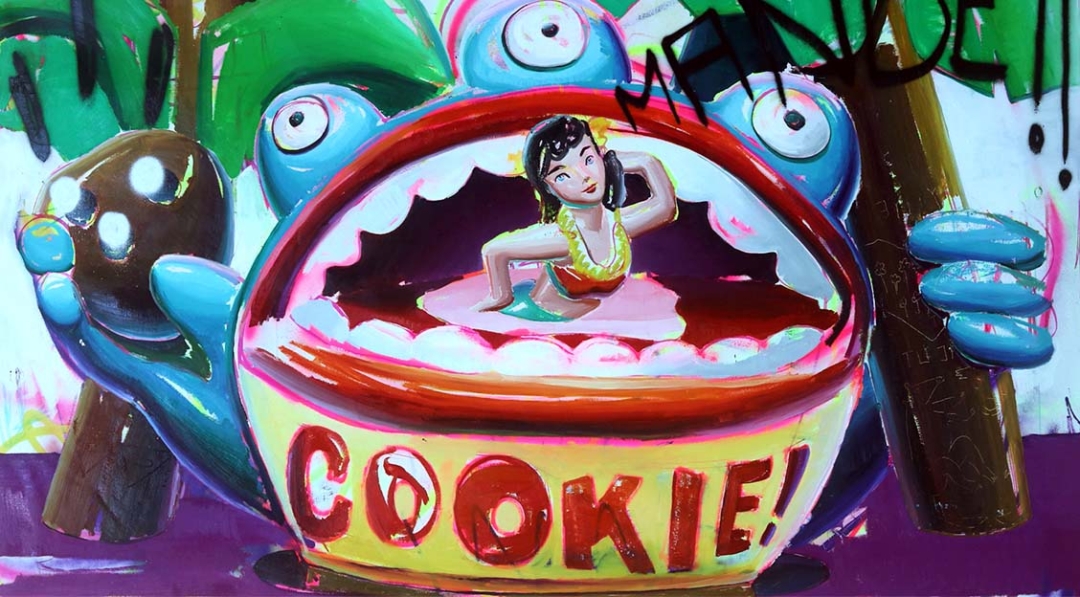
In 2021, Ana Barriga received the BMW Paint Award for Innovation at its 36th edition for ‘Mande!’. © La Barriga Studio
People have said more than once that your creative process is quite similar to Diogenes syndrome. Explain this to us so that we can stop worrying.
And afterwards they ask me why I’m single... [laughs]. I always do the same thing: I go to flea markets or anywhere I can find some kind of rubbish and I take it to my studio, where I have a wild collection of junk. With the piece in question, I set up a still life and I play around, paint, and manipulate it as it occurs to me. That’s how I slowly build the outline of the story I want to tell. I had to change this due to the pandemic and now I mix what I find inside and outside of my head. That’s the heartbeat.
Your pictorial universe features ceramic figures that you then desecrate with other strokes. The result is funny, it’s street smart; the apple doesn’t fall far from the tree, right?
The strokes are the spicy ingredient. I love playing with that kind of contrast: stretching them and twisting them as much as possible. It has a lot to do with how I’ve been educated, the experiences I’ve had, and I still have. Life is crazy.
Which are the most recurring themes in your work and where do you find inspiration?
Sexuality and sensuality. Painting is super sexy. It has a sickly-sweet aspect that seduces you because of the swaying of the material itself and, on the other hand, it’s messy: it smells bad, you get dirty, it’s hard to remove. I’m also interested in religion, politics, and life in general. And I find inspiration on the street. If you’re aware of what’s happening around you, the story is crazy. It’s normal that aliens haven’t invaded us yet, they don’t dare to come!
“When I wake up, until I get to the studio in the morning, it’s like I can’t breathe. That’s where what I really want to happen takes place”
Do you spend a lot of time at the studio?
The studio is my home, my cave, I spend all day there because I’m clumsy and have to spend a lot of time working. When I wake up, until I get there in the morning, it’s like I can’t breathe. That’s where what I really want to happen takes place. I need it every day.
Right now, you’re talking to us from London, what are you doing there?
After New York, my intuition told me that I’d already danced enough in Madrid. As soon as I bought my ticket to London, two projects came up: a gallery whom I’ve worked with again and another huge one that makes me float just thinking about it. When I made the Laki Kat sculpture, it was purchased by the London County Hall and the owner of the building has given me a residence grant including a studio and accommodation, and also supports me in all the research and creations I want to do. At the same time, I’ve been commissioned a garden of sculptures in front of the London Eye.
In the midst of all this hyperactivity, you’ve created a grant to promote young talent called IAM WITH YOU. What does it involve?
During the pandemic, tons of colleagues told me about how their projects were falling through, how they weren’t being paid, or how institutions were reducing grants. That’s when I came up with the idea of creating a self-funding grant that consists of the following: I sell a painting and I give the profits to you. And you come with me to the studio, produce whatever you want, and you donate a work for us to find a buyer and give that money to someone else. We’ll launch it every two years so that it’s more sustainable. I’m interested in young artists to keep emerging because this needs to keep rolling.
On the topic of promising young artists, what is talent for you?
Talent is squeezing the lemon for all its worth. Pleasure and enjoyment, knowing how to overcome things and living to death.
Before we spoke about the Ana Barriga of the past, is there anything you want to say to your future self?
Keep going crazy, dear.
